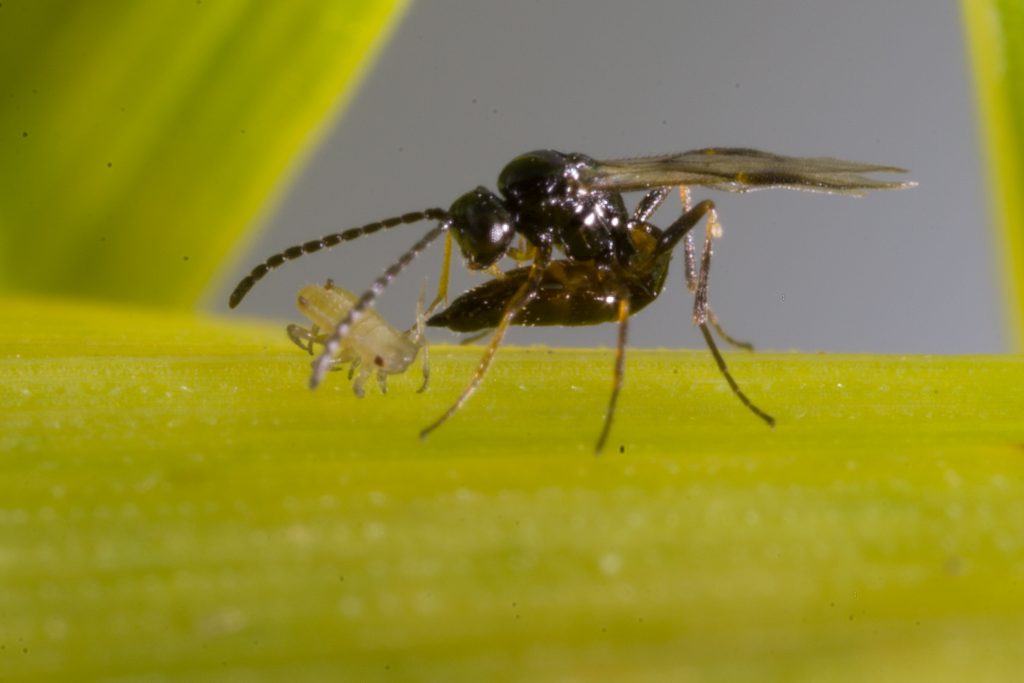Parasitoid wasps can be extraordinarily useful in controlling aphids in grain crops.
Unlike predators, they do not feed on the aphid, but use the pest to reproduce.
Free-living wasps insert their modified sting (‘ovipositor’) into the aphid to lay their egg.
As the larva grows it feeds on the aphid from inside, creating the recognisable golden/brown, engorged body, called a ‘mummy’.

Aphidiine parasitoid wasp research
Aphidiine parasitoid wasps attack many aphid species, both immature and adult, winged and unwinged. However, little is known about them in an Australian context:
What species are out there?
Where are they found?
When do they move into grain crops?
Where do they go after harvest?
Do the species differ around Australia?
University of Melbourne PhD student Samantha Ward aims to answer these questions.
With the assistance of GRDC funding, Sam has travelled extensively around Victoria, monitoring the aphid parasitoid populations over two growing seasons to identify the diversity and abundance of wasps present. Samples have been received and identified from NSW, SA, TAS and WA.
From Sam’s work, one trend is clear – one species of wasp dominates aphid parasitism in Australia.
That is, significantly more Diaeretiella rapae have been found parasitising grain aphids more than any other species; in some cases, comprising over 90% of all wasps reared from Sam’s collections.
Why Diaeretiella rapae is so abundant around Australia is not yet known! This wasp can be found worldwide, but the reasons for its success are a mystery.
Your help is needed!
This project is continuing over the 2019 season and samples of mummified aphids from grain crops from all states, particularly Tasmania, are needed.
Samples can be sent in the mail. Please send them via express post on the day of collection, and not before a weekend. Postage costs can be reimbursed on request.
Ensure there is a label inside the container and on the outside stating:
- Date collected
- Who collected the specimen
- Location of collected specimen (preferably the GPS co-ordinates)
- The crop from which the specimen was collected
Sowing date, recent chemical history and/or the previous crop type would be a huge bonus! Recording sheets can be requested, if required.
Please send specimens to:
Samantha Ward, Bio21 Institute, 30 Flemington Road, Parkville, VIC 3052
Many thanks to those who have already sent in samples!
For more information contact: Samantha Ward, 0426091108, sward3@student.unimelb.edu.au
Cover image: Photo by Andrew Weeks, Cesar Australia





